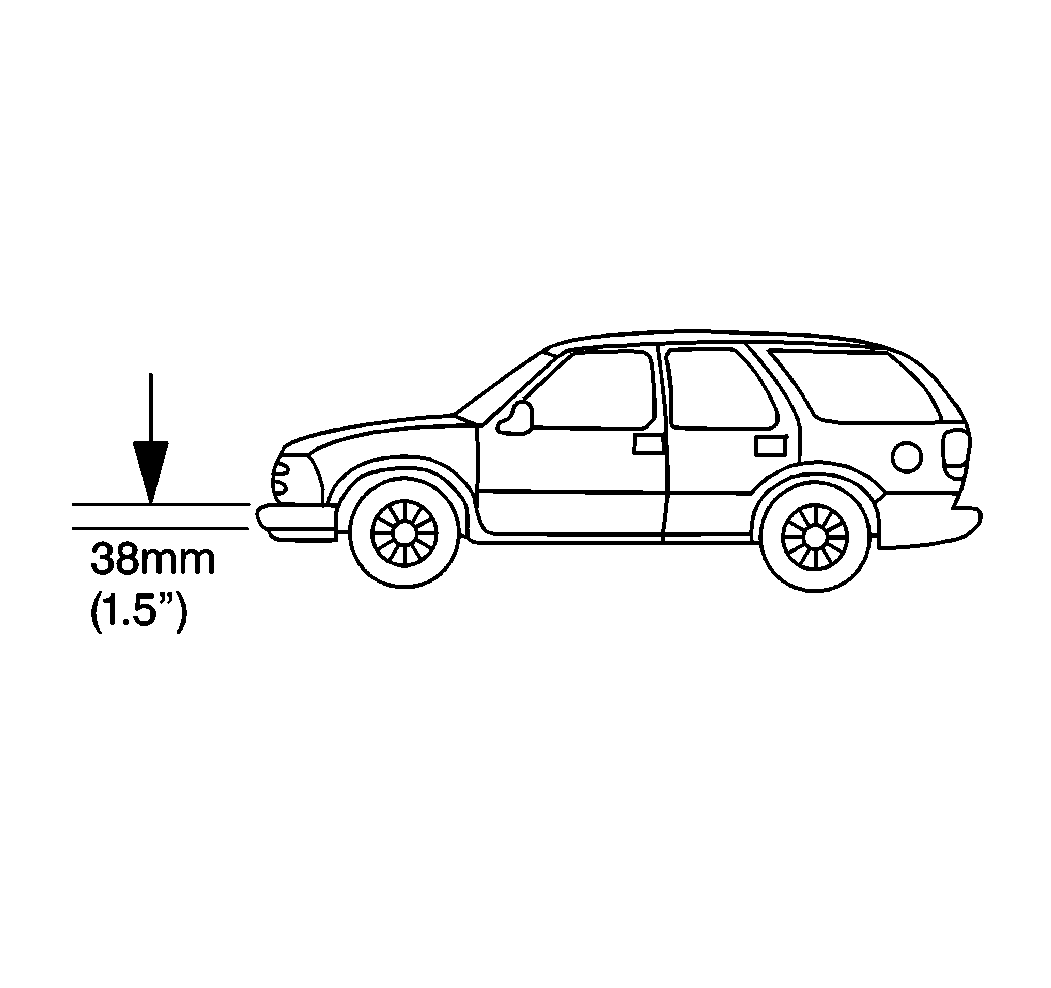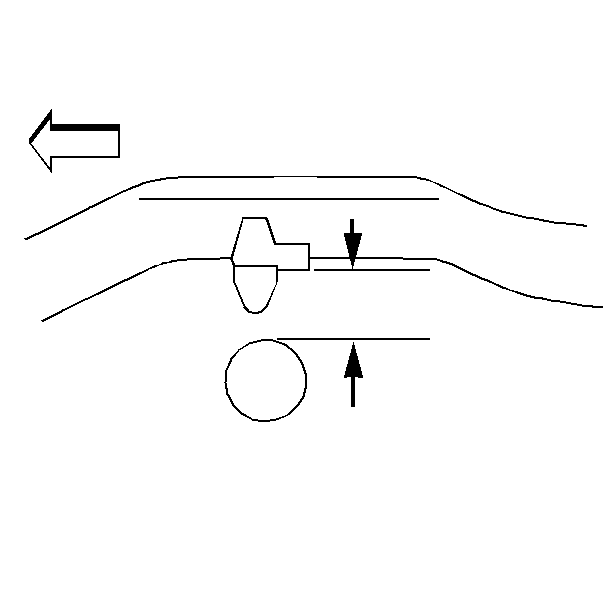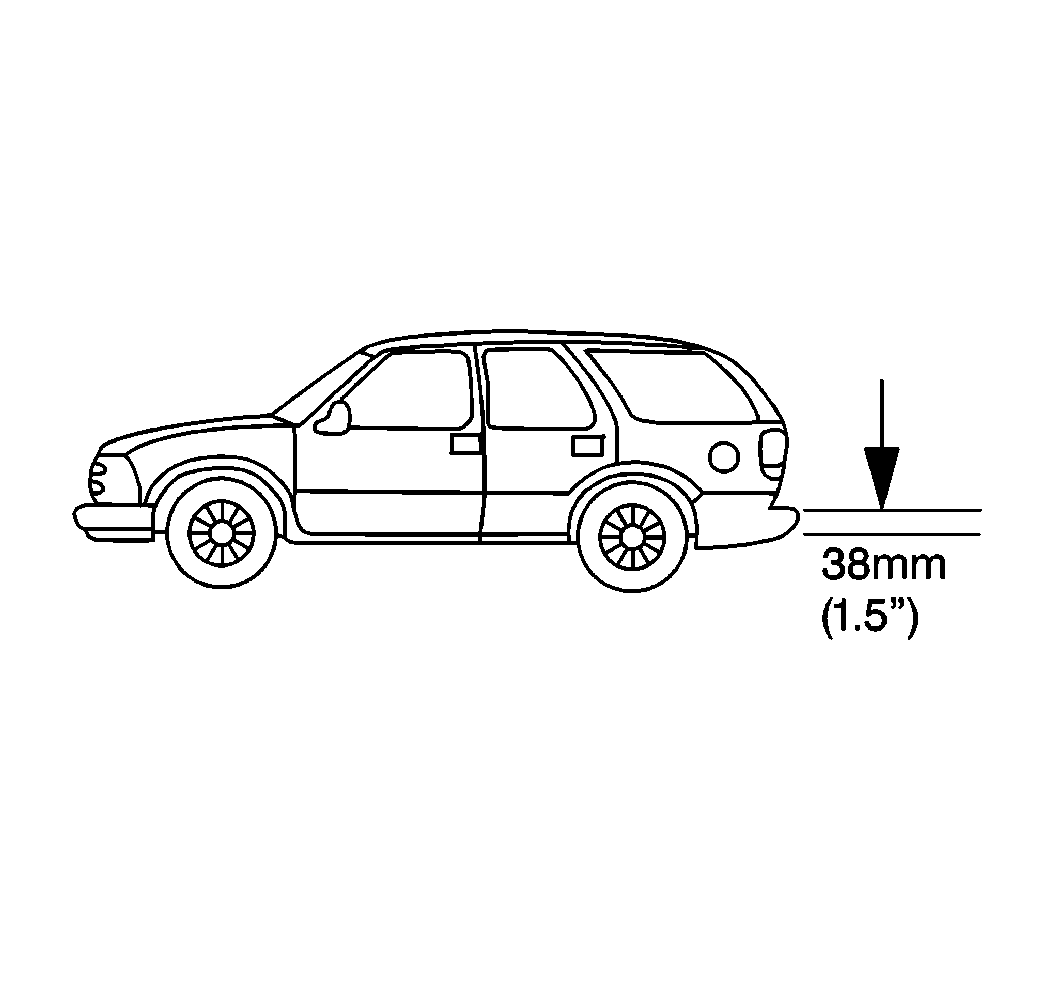Z Height
Trim height is a predetermined measurement relating to vehicle ride height. Incorrect trim heights may cause symptoms similar to alignment problems. Check the trim heights when you diagnose steering or vibration complaints.
The Z dimension measurement determines the proper ride height for the front end. Use the torsion bar adjusting arm in order to adjust Z height.

Measure Z height from the center line of the pivot bolt (1) down to the lowest inboard edge of the steering knuckle (2).

Trim all curb Z heights at 114.0-128.0 mm (4.6-5.0 in). In order to adjust Z height, turn the bolt that contacts the torsion arm as needed. One revolution of the bolt into the nut increases the Z height by 6.0 mm (0.2 in) (1).
Z Height Measurement
Measure the Z height using the following procedure:
- Lift the front bumper of the vehicle up around 38 mm (1.5 in).
- Gently remove your hands. Let the vehicle settle by itself.
- Repeat the jounce operation two more times for a total of three times.
- Measure the Z dimension.
- Push the front bumper of the vehicle down about 38 mm (1.5 in).
- Gently remove your hands. Let the vehicle rise by itself.
- Repeat the jounce operation two more times for a total of three times.
- Measure the Z dimension.
- Find the average of the high and low measurements. This is the true Z dimension.

Important: True trim height is the average of the high and low measurements.
D Height
The D dimension measurement determines the proper rear end ride height. There is no adjustment procedure. Repair may require replacement of suspension components.

All vehicles require a measurement from the bumper bracket down to the top of the rear axle housing tube. Trim D height at 130.8-148.11 mm (5.1- 5.8 in).
D Height Measurement
Measure the D height using the following procedure:
- Lift the rear bumper of the vehicle up around 38 mm (1.5 in).
- Gently remove your hands. Let the vehicle settle by itself.
- Repeat the jounce operation two more times for a total of three times.
- Measure the D dimension.
- Push the front bumper of the vehicle down about 38 mm (1.5 in).
- Gently remove your hands. Let the vehicle rise by itself.
- Repeat the jounce operation two more times for a total of three times.
- Measure the D dimension.
- Find the average of the high and low measurements. This is the true D dimension.

Important: True trim height is the average of the high and low measurements.
